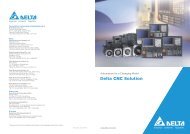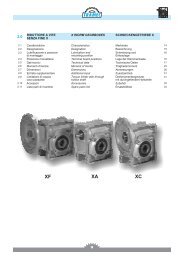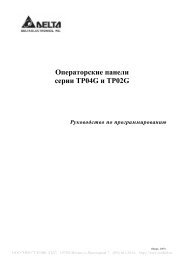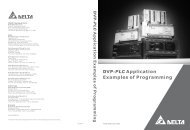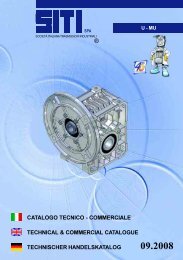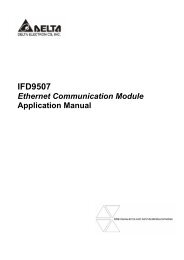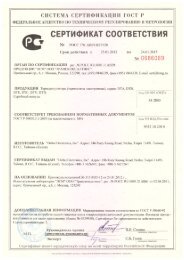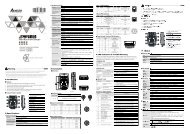Medium Voltage Application Guide
Medium Voltage Application Guide
Medium Voltage Application Guide
You also want an ePaper? Increase the reach of your titles
YUMPU automatically turns print PDFs into web optimized ePapers that Google loves.
13678.A<br />
13873.A<br />
Temperature rise<br />
SWITCHGEAR<br />
During short circuit conditions the busbar will rise in temperature, depending on the level of short circuit current and<br />
time duration. This temperature rise must not exceed the thermal limits of any equipment in contact with the<br />
busbar.<br />
Maximum permissible temperature rise for bolt-connected devices, including busbars<br />
Material and dielectric medium<br />
Maximum permissible<br />
temperature (°C)<br />
Temperature rise<br />
above 40 °C ambient<br />
(°C)<br />
Bolted connection (or equivalent)<br />
Bare copper, bare copper alloy or bare aluminium alloy<br />
In air 90 50<br />
In sulphur hexafluoride (SF 6 ) 115 75<br />
In oil 100 60<br />
Silver or nickel coated<br />
In air 115 75<br />
In sulphur hexafluoride (SF 6 ) 115 75<br />
In oil 100 60<br />
Tin-coated<br />
In air 105 65<br />
In sulphur hexafluoride (SF 6 ) 105 65<br />
In oil 100 60<br />
Source: derived from IEC 62271-1<br />
NOTE<br />
When engaging parts with different coatings, or where one part is of bare material, the permissible<br />
temperature and temperature rise shall be those of the surface material having the lowest permitted<br />
value.<br />
Electrodynamic withstand<br />
During short circuit conditions, the peak current associated with the first loop of the fault current produces<br />
electrodynamic forces which stress the busbar and insulator standoff supports. Stress on the busbars must not<br />
exceed the limits of the material used. Bending forces must not exceed the mechanical limits of the insulator<br />
standoffs.<br />
Electrodynamic forces<br />
Busbars (parallel)<br />
Support<br />
I p<br />
I p<br />
e<br />
h =<br />
2<br />
F 1<br />
F<br />
F 1<br />
F 1<br />
l<br />
H<br />
d<br />
d<br />
d Distance between phases (cm) H Insulator height<br />
l Distance between insulators on a single phase<br />
(cm)<br />
h Distance from head of insulator to busbar<br />
centre of gravity<br />
F 1 Force on busbar centre of gravity (daN) F Force on head of insulator stand-off (daN)<br />
I p Peak value of short circuit current (kA)<br />
NOTE: 1 daN (dekanewton) is equal to 10 newtons.<br />
710-12280-00A <strong>Medium</strong> <strong>Voltage</strong> <strong>Application</strong> <strong>Guide</strong> Page 81






